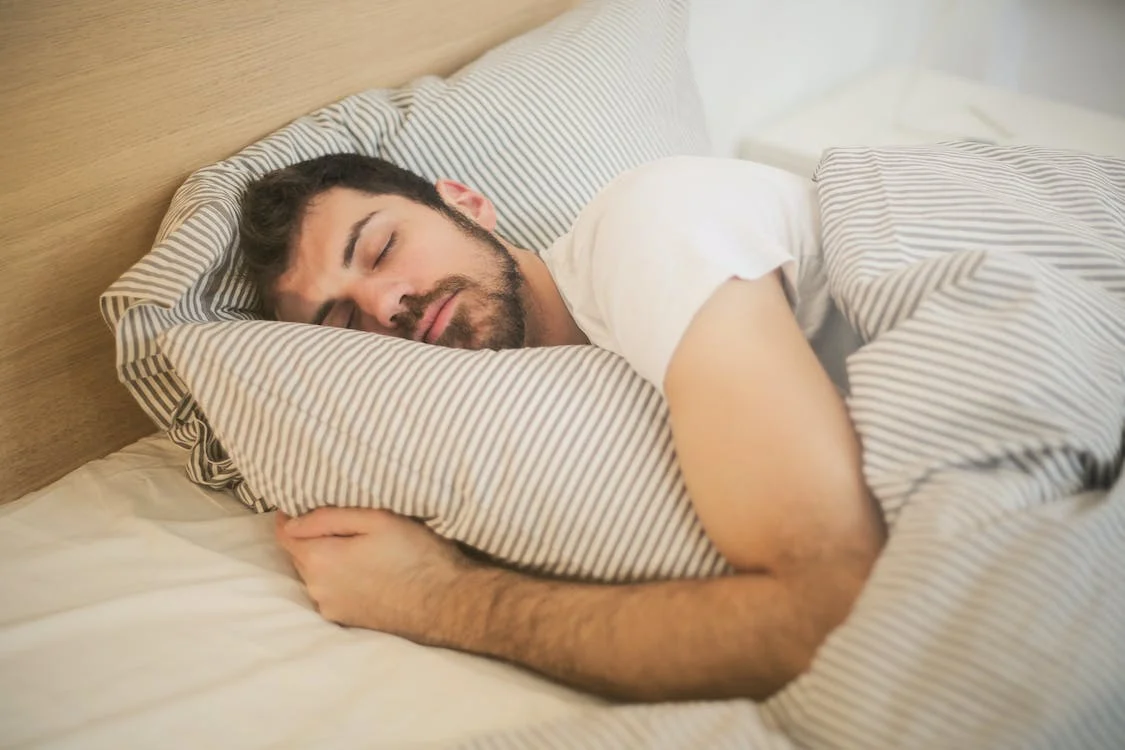Image source: Pexels.com
If you’re having trouble sleeping, don’t despair. There are many different sleep aids on the market that you may not yet have tried.
So, consider using the following ten aids to help you finally get a good night’s rest.
1. Darkness
By simply darkening your bedroom, you may be able to achieve better sleep.
While blackout curtains are well known for their ability to block out light, other approaches can be taken, such as wearing a comfortable sleep mask or covering any devices that emit LED lights during the night.
2. Aromatherapy
Aromatherapy, which uses essential oils to improve relaxation and promote rest, could assist you with your sleeping problem.
For example, lavender oil is widely known for its calming effects on the mind and body. To incorporate it into your bedtime routine, consider using a diffuser placed in your bedroom or applying a few drops of diluted oil onto your pillow or bedding.
3. White Noise Machines
While white noise machines might not be new on the market, they are sometimes overlooked as a potential sleep aid. These devices create consistent, ambient background noise that can assist in blocking out other sounds that may keep you awake.
By adding a white noise machine to your bedroom, you might find it easier to fall asleep and stay asleep throughout the night.
4. Delta-8
Delta-8 is a milder version of the well-known Delta-9 THC found in cannabis.
Delta-8 products are becoming increasingly popular as sleep aids because Delta-8 is known to have relaxing and anxiety-reducing properties that can help people fall asleep more easily.
Companies like Hometown Hero offer an array of Delta-8 THC-infused products, such as tinctures, gummies, and vape cartridges.
5. Weighted Blankets
Weighted blankets have been gaining popularity as a means to improve sleep quality. These blankets contain small beads or pellets that provide gentle pressure on the body, mimicking the feeling of being embraced.
Some people find this sensation comforting and relaxing, which can help with falling asleep faster or sleeping more soundly through the night.
6. Breathing Exercises
While you might not think of breathing exercises as an actual sleep aid, they can be quite effective in promoting relaxation at bedtime. One example is the “4-7-8” technique: inhale for four seconds, hold your breath for seven seconds, and exhale for eight seconds.
Repeating this cycle multiple times can help calm your nervous system and encourage sleepiness.
Moreover, focusing on your breath can also redirect any racing thoughts or bedtime worries.
7. Blue Light-blocking Glasses
If you’re struggling with sleep, consider trying blue light-blocking glasses. These special lenses filter out the blue light that’s emitted from screens and electronic devices.
By wearing them a few hours before bedtime, you may reduce the negative impact on your sleep-wake cycle and enhance your natural melatonin production.
8. Sleep-focused Podcasts or Apps
For those who require auditory input to quiet the mind, sleep-focused podcasts or apps can be helpful tools. These resources typically feature calming voices, soothing music, or natural sounds that create a tranquil atmosphere.
As you listen to these recordings, the gentle audio landscape may make it easier for you to drift off to sleep.
9. Yoga Nidra
Yoga Nidra, also known as “Yogic Sleep,” is a guided meditation practice designed to bring about deep relaxation while maintaining awareness. This practice involves systematically focusing on different parts of the body while maintaining a state of conscious rest. It’s believed that even a short session of Yoga Nidra can help balance your mind and body, potentially improving sleep onset and quality.
10. Acupressure
As an alternative to acupuncture, acupressure may contribute to better sleep without the use of needles. This technique involves applying pressure to specific points on your body that correlate with sleep improvement or relaxation. You can perform acupressure yourself using your fingers or purchase specialized tools like mats or pillows designed for the purpose.



